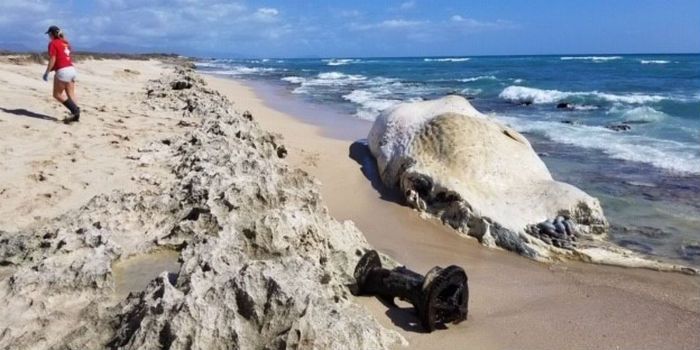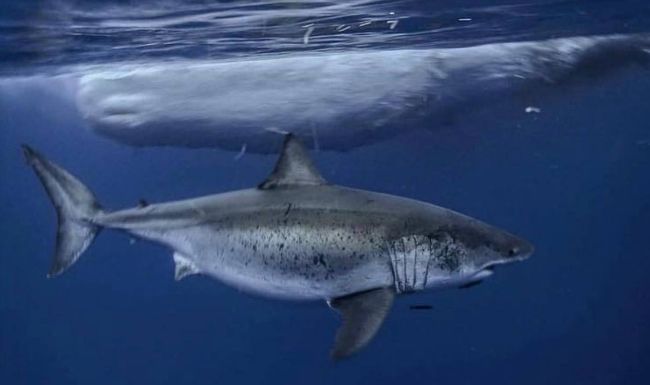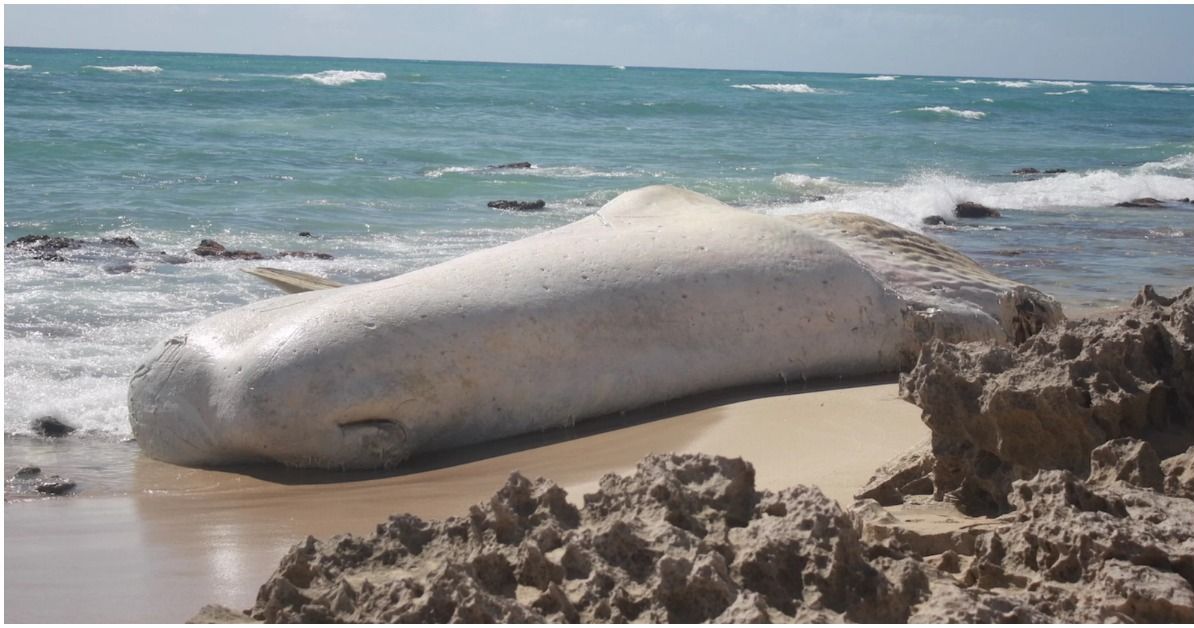A beach in Oahu, Hawaii has been "haunted" by an unwanted visitor for more than a month, as repeated attempts to remove a huge sperm whale carcass have failed.
The whale carcass first washed up on shore on January 10. Since then, the state's Department of Land and Natural Resources made two separate attempts to tow the carcass out to sea, and both failed.

The carcass just keeps drifting back to land, like a house guest that refuses to call it a night. It also attracted unwanted attention, including from a diver who posed on its body and others who allegedly tried to steal the whale's teeth.
Authorities weren't just concerned the enormous body was ruining the atmosphere on their beach. Ocean predators like sharks also flock to feed on whale carcasses, making the water nearby dangerous for swimmers.

After the second tow failed, it was decided that body could stay in its new location at an industrial park on Oahu's western shore, far from the more popular beaches, while nature took its course.
Now, scientists are taking advantage of the unusual opportunities this stinky specimen offers to learn more about sperm whales.
The body, swollen with gas as it decomposes, has been compared to a puffy marshmallow. What you're looking at is actually the inner layer of fatty blubber that's normally hidden under the whale's gray skin.
While the body doesn't offer all the research opportunities of a healthy beached whale - and dissecting a rotten whale is no picnic - there's still much to learn.
Scientists guess from the animal's empty stomach that it was sick when it died. Sperm whales will normally eat 2,000 pounds of food a day, but the animal may have been too ill to dive into its deep ocean hunting grounds.
It can be painful to imagine the whale going hungry in its final days, but it's not as distressing as the sperm whale that washed up in Indonesia with 13 pounds of plastic in its stomach last year.
While only part of the body remains, what's left of the whale suggests it once measured 55 feet long (that's above average for a male adult sperm whale, which can weigh more than 45 tons).
Experts also plan to study the whale's bones as it decomposes, to identify if it was struck by a boat before it died.
The gross story also comes as a warning to beachgoers across the country: if you spot a marine animal washed up on shore, call the authorities. The faster they can examine the animal, the more they can learn about it, which could help to protect other animals of the same species.
Noelani Puniwai, an assistant professor of Hawaiian Studies at the University of Hawaii Manoa, offered another perspective on the whale to Hawaii News Now.
"From a cultural standpoint we always look at the whale's best interest, as they not only represent a large marine mammal, but in Hawaiian culture they represent our kupuna who traveled from far, distant places," he wrote in a news release.
"They are amazing messengers, as we can learn so much from them and help us to determine our own roles in the environment."
[H/T: Live Science, Hawaii News Now]
